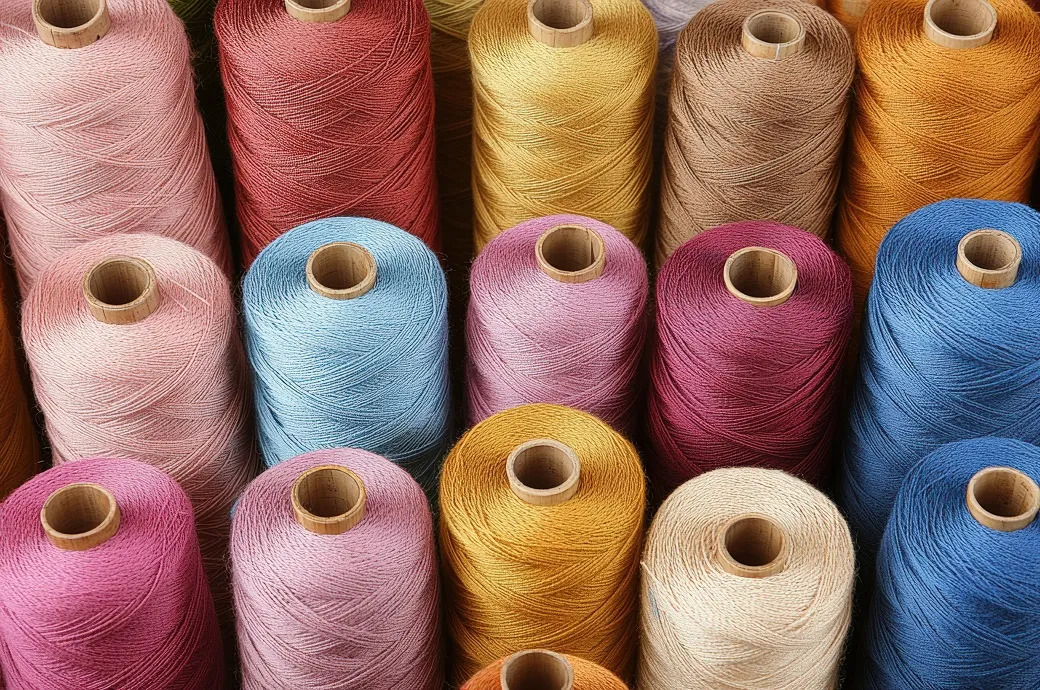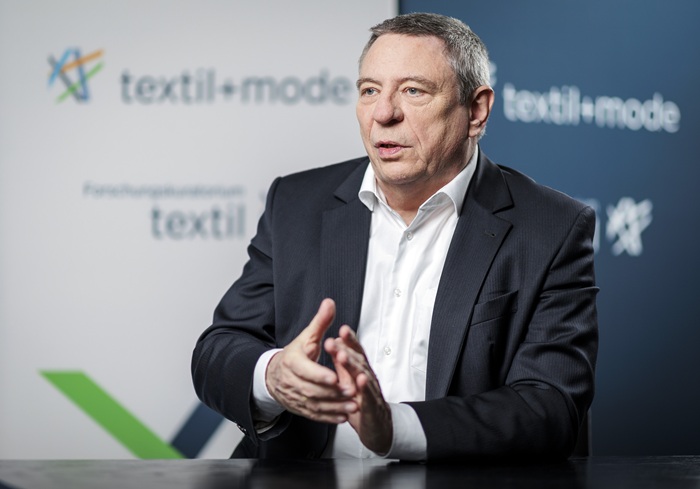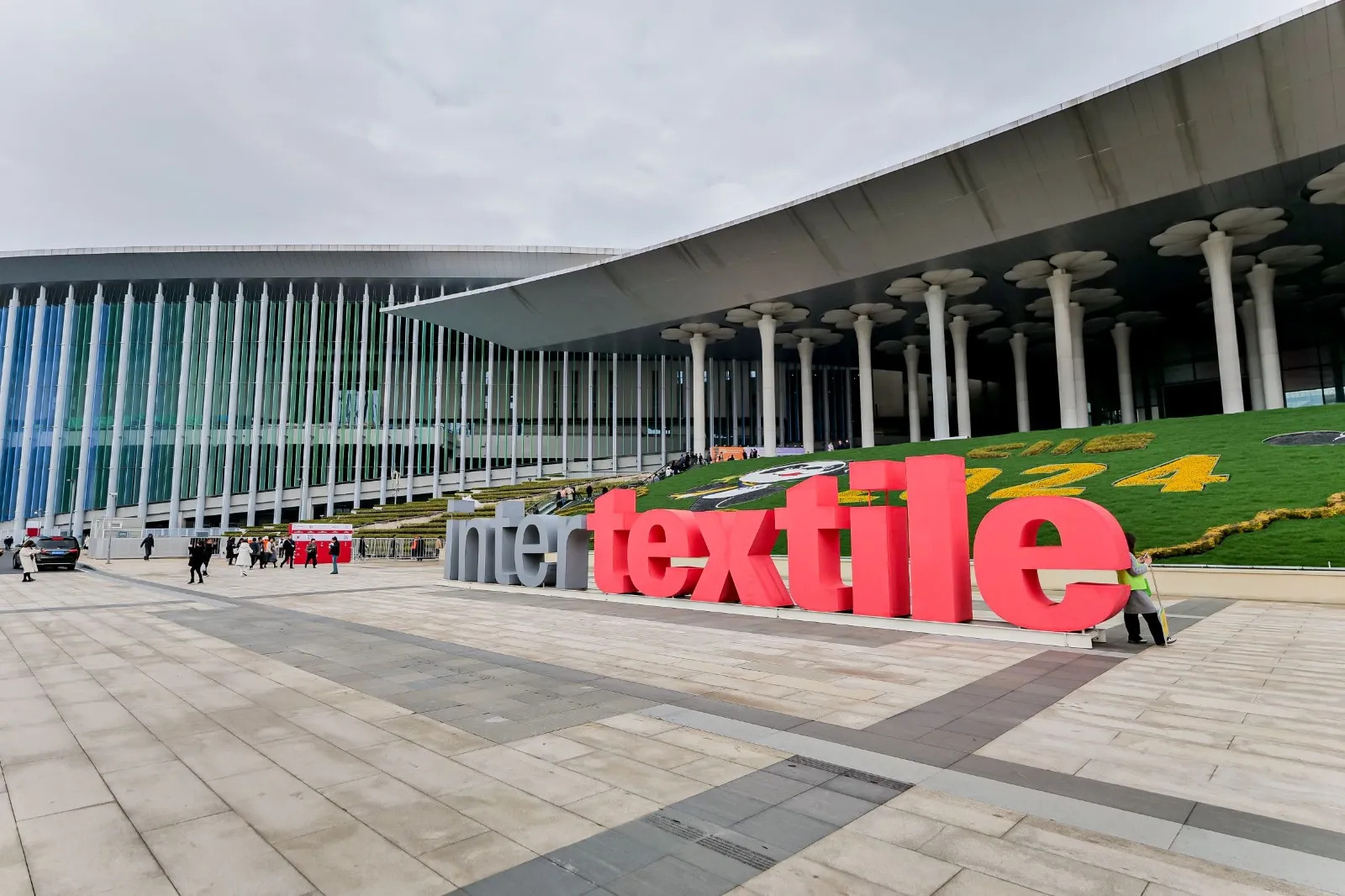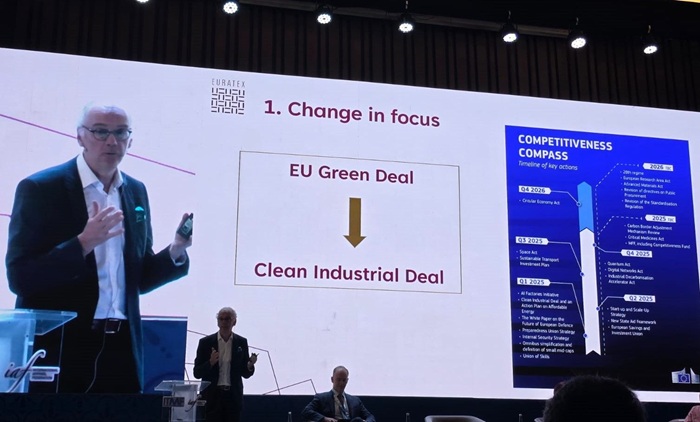FW
Melbourne will become a global trade hub as the Global Sourcing Expo returns to the Melbourne Convention and Exhibition Centre (MCEC) from November 18–20, 2025. Known as the leading sourcing marketplace in the region, the Expo connects international manufacturers and suppliers with thousands of buyers from Australia and New Zealand, providing a unique platform for business growth, trend spotting, and networking.
The 2024 Melbourne event drew over 900 exhibitors from more than 20 countries and regions, attracting over 4,700 professional attendees, a 24 per cent increase from the previous year. The 2025 edition is expected to surpass this, with over 5,000 buyers, designers, and decision-makers ready to find new partners.
For global suppliers, the Expo is a crucial entry point into the Indo-Pacific market, one of the world's fastest-growing consumer regions. Exhibiting in Melbourne gives businesses direct access to decision-makers actively seeking quality and innovation in categories like apparel, textiles, home furnishings, footwear, and accessories.
Unlike digital platforms, the Expo offers invaluable face-to-face interaction. Exhibitors can showcase their craftsmanship, discuss logistics like minimum order quantities (MOQs) and lead times, get instant feedback, and build long-term relationships. This direct engagement helps businesses gain a foothold in the region’s dynamic retail markets.
For visitors, the Expo is an unmatched opportunity to physically explore products, discover trends, and meet suppliers in one central location. It's the most efficient way for buyers, retailers, and designers to find new partners and expand their product lines, offering a more comprehensive experience than online searches.
The event will also feature the Global Sourcing Seminar Series, with expert-led sessions on key industry themes like artificial intelligence, e-commerce, and sustainability. These sessions help attendees future-proof their business strategies.
Adding to the event's scope, the China Clothing Textile Accessories Expo will be co-located with the main event, giving buyers even more access to a diverse range of products and suppliers.
The European Parliament is expected to soon approve the updated EU waste legislation aimed at reducing textile waste. The new rules introduce extended producer responsibility (EPR) schemes, which will require manufacturers to fund and manage the collection, sorting, reuse, and recycling of waste textiles.
This reform follows a deal reached between Parliament and the Council earlier this year. The Council has already adopted its position, and the Parliament's endorsement will clear the way for the new legislation to be published in the EU Official Journal.
According to the European Commission, the EU generates 12.6 million tons of textile waste annually. Clothing and footwear alone account for 5.2 million tons, which is equivalent to about 26 pounds per person each year. Despite this, less than 1 per cent of textiles worldwide are recycled into new products, which highlights the significant scale of the problem.
This revised legislation is part of the EU's broader effort to promote circularity and sustainability in the textile sector, which has been identified as one of the four largest sources of environmental pressure globally.
In a strong showing of support, around 70 VDMA member companies will participate in ITMA ASIA + CITME at the end of October in Singapore. These companies represent nearly every chapter of the textile machinery value chain, including spinning, man-made fibers, nonwovens, weaving, braiding, knitting, warp knitting, finishing, and dyeing, as well as technologies for textile recycling and processing recycled materials.
The VDMA has organized a German Pavilion with two group stands - one for spinning in Hall 4 and another for finishing in Hall 7 - featuring a total of 30 exhibitors.
Dr. Janpeter Horn, Chairman, VDMA Textile Machinery Association, explains, the main topics for VDMA members are efficiency, automation, digitalization, and sustainability. The companies continue to strive for innovative and sustainable solutions with low environmental impact to reduce production costs, without compromising on the high quality of European machinery that customers rightly expect.
Dr Harald Weber, Managing Director, VDMA Textile Machinery Association, adds, the members of the association are looking forward to coming back with ITMA ASIA to Singapore after 20 years. With its central location and seamless travel options, Singapore is the perfect location for reaching customers from one of the world's fastest-growing regions for textile and garment production. Asia remains the world’s top production location for textiles and clothing and is expected to hold this position for the foreseeable future. This makes Asia the most important sales market for VDMA member companies, with nearly half of all German textile machinery and accessories exports shipped to the continent. Additionally, many German textile machinery companies have local production facilities in countries like China, India, and Vietnam.

The $4.5 trillion global luxury market is under siege, not just from the traditional counterfeiters operating in back alleys and illicit online forums, but from a new, more sophisticated challenger: the ‘dupe’ retailer. These brands, distinct from their counterfeit counterparts by not directly copying trademarks, have built multi-billion-dollar empires. They replicate the aesthetic and quality of premium mid-market brands at a fraction of the cost. While the threat is real, an emerging ‘dupe-proof playbook’ is showing that the most successful defence is not a legal one, but one rooted in brand identity, innovation, and consumer connection.
The dupe phenomenon led by social media platforms like TikTok, where viral ‘dupe hauls’ and side-by-side comparisons flourish, is a direct response to a cultural shift. Young, aspirational consumers, particularly Gen Z, are sceptical of the high-end luxury price tag. They feel cheated by what they perceive as opaque pricing structures and are drawn to the transparency of dupe brands that break down production costs. This is not about supporting illegal counterfeits, but about a new form of everyday luxury that prioritizes value and accessibility.
How big is the dupe economy?
The financial impact of the dupe market is huge and its continuous growth is a major concern for luxury brands. According to a 2024 report, the global perfume dupes market alone was valued at $2.71 billion in 2024. This segment is projected to grow at a Compound Annual Growth Rate (CAGR) of 15.80 per cent from 2025-34, reaching an estimated $11.75 billion by 2034.
This growth is not limited to one product category. The broader illicit trade in counterfeit and pirated good, which includes dupes was estimated at $467 billion in 2021, accounting for up to 2.3 per cent of global trade. The sheer scale of this market, driven by changing consumer behaviors and technological advancements, highlights the urgency for brands to adapt.
The brands most impacted
While the super-exclusive haute couture houses and storied luxury brands like Hermès and Chanel are not immune, the dupe phenomenon impacts them differently. Their allure is built on scarcity, heritage, and unattainable price points. The real battle is being waged in the accessible luxury and mid-market segments. These are the brands that offer high-quality, long-lasting products but operate on a business model that, until now, has relied on a certain level of exclusivity and brand-led aspiration.
Luxury and premium brands most at risk are those that are product-centric rather than brand-centric these are brands whose success is tied to a single, easily replicable product or silhouette, rather than a distinctive brand story and community. When a brand's hero product like a specific cashmere sweater or a minimalist leather tote becomes a generic commodity, it's ripe for a dupe.
Brand overly reliant on a singular design motif are also at risk. While signature motifs are crucial for brand recognition, if they can be easily copied without trademark infringement, they become vulnerable. For instance, a particular weave, stitching pattern, or silhouette that is widely recognized but not legally protected can be mimicked by dupe manufacturers.
In an age where consumers are driven by values and authenticity, brands without a strong story about their craftsmanship, sustainability efforts, or founder's vision are at a disadvantage. Dupes can't replicate heritage or a brand's deep-rooted point of view.
What brands can do
The fight against dupes requires a multi-pronged approach that moves beyond traditional brand protection and legal action. It's a fundamental shift in how brands build and maintain value.
Double down on brand building and storytelling: The most effective counter-strategy is to create an identity that simply cannot be copied. This is about elevating the brand beyond the product itself.
Craft a unique point of view: Brands are moving away from simply selling a product and are instead selling a lifestyle, an ethos, and a community. This involves investing in compelling storytelling, from the sourcing of materials to the artisanal process. Brands like AYR, Bleusalt, and White + Warren are building strong identities through unique design motifs and narratives that highlight their distinct point of view.
Lean into scarcity and exclusivity: While accessibility is a goal for many, a brand can create a new form of exclusivity through limited drops, collaborations, and member-only access. This transforms the purchasing experience from a simple transaction into a special event, something a dupe can't replicate.
Innovate beyond the dupe: Rather than playing defence, some brands are using dupes as a signal for market demand and are innovating to stay ahead. They are creating dupe-proof products which involves developing proprietary materials, unique technical innovations, and design elements that are difficult and expensive to replicate. For example, Lululemon's ‘Dupe Swap’ campaign by inviting customers to trade in their dupes for an authentic pair of Align leggings, the brand showed the superior quality and value of their product, turning a threat into a marketing opportunity.
Also, when a physical product can be replicated, the experience of interacting with the brand becomes the ultimate differentiator. This includes creating immersive retail environments, personalized services, and exclusive events that a dupe brand, operating almost exclusively online, cannot offer.
While legal battles are often a game of ‘whack-a-mole’, technology offers a proactive defence. Luxury brands are increasingly using blockchain technology to create an immutable record of a product's journey from factory to customer. The Aura Blockchain Consortium, a joint effort by LVMH, Cartier, and others, is a prime example. Consumers can scan a QR code on a product to verify its authenticity, learn about its origin, and access information about its craftsmanship. Also, AI-powered tools are being used to scan e-commerce platforms and social media in real-time to detect and take down dupe listings, using coded language and visual cues that human eyes might miss.
Thus the rise of the dupe market is a wake-up call for the premium sector. It reveals that in a post-trust consumer landscape, a brand's price tag and reputation are no longer enough to justify its value. The data is clear. Consumers are more willing than ever to buy a lookalike if the original brand fails to provide a compelling reason to choose authenticity. The brands that will not only survive but thrive in this new era are those that pivot from selling products to selling an identity, an experience, and a narrative that is, by its very nature, impossible to duplicate.
A leading platform for managing the fashion supplier lifecycle, Retraced has enhanced its partnership with the Social & Labor Convergence Program (SLCP) to allow the program’s assessment data to be directly integrated into the Retraced platform.
As an official ‘Passive Accredited Host,’ Retraced can access verified assessment data through the SLCP Gateway, providing brands and suppliers with a single, reliable dataset. This eliminates the need to switch between different tools or rely on static reports, allowing companies to collaborate using a single source of credible information.
The integration embeds verified SLCP data directly into supplier profiles on the Retraced platform. This data is linked to existing compliance and sourcing workflows and can be used with corrective action planning tools (CAPA). For ESG (Environmental, Social, and Governance) and sourcing teams, this partnership reduces the burden of repetitive audits and redundant requests, enabling stakeholders to focus on long-term improvements to working conditions.
This expanded partnership marks a new phase in the collaboration between SLCP and Retraced, with the goal of providing supply chain partners with evidence-based insights to drive more efficient and strategic compliance management.
Retraced aims to make sustainability management and responsible supplier management more efficient and impactful, says Lukas Puender, CEO, Retraced. By integrating verified SLCP data into the Retraced platform, the company enables both brands and suppliers to save time, reduce duplication, and work with reliable information."
Steve Harris, COO, SLCP, adds, the company focuses on minimizing audit fatigue by simplifying the assessment process and delivering credible, actionable data, and with Retraced’s advanced data-driven platform, manufacturers and brands can seamlessly connect and share SLCP data. It hopes this collaboration will save facilities further resources on redundant audits, supporting our ultimate goal of decent working conditions in global supply chains, adds Harris.
With this new integration, SLCP assessment data can be shared with Retraced via the SLCP Gateway and automatically synced to a supplier’s profile. The system flags non-compliance issues and helps initiate the next steps for resolution. This streamlined process leads to improved performance. In the coming months, these workflows will be further enhanced with AI-assisted corrective action planning, which will suggest actions and timelines to support a collaborative follow-up.
Manufacturers are already seeing the benefits. Michael Cai, Director -Operations and Supply Chains, Décor Global, notes, wth Retraced now hosting the company’s SLCP data, they will be able to share verified insights once and feel confident that our brand partners are seeing accurate, trusted information. It will definitely save us time and help everyone focus on improving working conditions, without all the manual work."
This partnership comes at a time when global regulations, such as the EU’s Corporate Sustainability Due Diligence Directive, are increasingly scrutinizing working conditions in supply chains. The verified, shareable SLCP data in Retraced provides compliance and sourcing teams with the necessary evidence to assess risk, act proactively, and work with suppliers to make
A new strategy from ReHubs aims to break the deadlock that the Europe's textile and apparel circular economy is caught in by creating the market conditions and coordinated action needed for textile-to-textile recycling at scale.
The strategy includes a comprehensive action plan to scale textile-to-textile recycling and increase the use of recycled fibers in Europe. It was developed from over 100 interviews and surveys with industry stakeholders. It outlines a roadmap and a portfolio of projects designed to solve the supply-demand issue that has stalled progress on circular textiles.
The new strategy is built on two main pillars: end-to-end supply chain management involving streamlining fragmented processes for collection, sorting, recycling, and manufacturing to deliver a reliable supply of recycled fibers at a transparent cost and quality, and financing orchestration focusing on mobilizing and de-risking the €5–6 billion in public-private investment needed to scale infrastructure.
To support these pillars, six strategic levers will accelerate progress, including standardizing the industry, conducting research, advocating for policy, mobilizing finance and investment, and building brand coalitions. These levers will create the conditions for a reliable feedstock supply, clear standards, stronger collaboration, and growing confidence in recycled textiles as a quality, scalable solution.
By bringing together and aligning stakeholders across the value chain, ReHubs aims to recycle 2.5 million tons of textile waste by 2032, unlock €5–6 billion in investments and create up to 10,000 new jobs in Europe and position Europe as a global leader in circular textiles through scalable, demand-driven recycling solutions.
ReHubs' new strategy will be unveiled on September 22, 2025. It is supported by a community of over 30 partners, including collectors, recyclers, brands, PROs (producer responsibility organizations), technology providers, and investors.
ReHubs will also share insights from the new strategy at the Dornbirn Global Fiber Congress and Circular Textile Days, inviting the wider industry to participate in building a truly circular textile ecosystem in Europe.
With over 400 participants from 173 companies already confirmed, the Outlook Conference by Edana is positioned as a great platform for networking and business development. Only two of the 20 available exhibition spaces remain, and delegates will also have access to 23 private meeting rooms, creating an ideal setting for more focused discussions with clients and suppliers.
This year's Outlook program features 20 international speakers and two evening cocktail receptions, providing many opportunities to connect with others in the sector. The agenda includes three keynote addresses: Ambassador Ivo H Daalder will discuss shifting global alliances and their effect on international business; McKinsey & Company will share new insights into grocery retail trends and consumer behavior; and Roover Consulting will explore how artificial intelligence can be applied to innovation and product development. In addition, the conference will cover topics such as market developments, sustainability, financing, and consumer trends in absorbent hygiene products and wipes.
An international association of over 250 members, Edana advocates for the benefits of nonwovens for society. Since 1971, the association has offered a wide range of services to help the industry achieve its goals, including supporting sustainability, responsible product stewardship, and addressing technical, regulatory, and market challenges. Edana also organizes several industry events that are specific to certain applications and geographic locations.
Everlane's Fall 2025 Campaign, ‘Laufey in Everland,’ features Grammy-winning artist Laufey and is the brand's first to be led by a celebrity. This partnership marks a new creative direction for Everlane.
Partnering with Laufey for the first talent-led campaign is a natural fit for Everlane as a brand, says Alfred Chang, CEO. Her artistry, global presence, and personal story align perfectly with the brand’s values of timeless design, individuality, and cultural relevance. Her effortless style is distinctly Everlane, and through 'Laufey in Everland,' she offers a fresh perspective on the future of Clean Luxury. Better For You.
The campaign's film, ‘Laufey in Everland,’ shows a cinematic dreamscape where Laufey goes through a portal from her home into a surreal, miniature city. The story explores the connection between timeless style, musical identity, and self-expression. In the film, Laufey invites the audience to embrace their individuality while highlighting Everlane's new Fall collection, which features pieces made for life's most important moments.
Throughout the campaign, Laufey showcases key pieces from the new collection. These items reflect the brand's core values: accessibility, thoughtful materials, and cleaner luxury. As she walks through ‘Laufey in Everland’ in the Leather T-Strap Flat, her first stop is a charming farmers market, which highlights the brand's commitment to approachable style and quality craftsmanship. From a train car, she sees rolling hills with new items like the Wrap Mini Skort, reinforcing the brand's ‘better for you’ message. Other featured pieces include the Air Alpaca Short-Sleeve Cardigan, Cashmere Handkerchief, Blazer in Tailor Twill, and the Slip Skirt in Silk Charmeuse.
In addition to the campaign, Everlane and Laufey have collaborated on an exclusive capsule collection to benefit The Laufey Foundation. The collection, which will be released on September 30, 2025, includes a Crop Zip Hoody, Cropped Crew Fleece, Wide Leg Sweatpant, and Pocket Tee Shirt in multiple colors. The collection will be available in limited quantities online and in-stores.
In a recent statement, the US cotton industry praised the new report from the Make America Healthy Again (MAHA) Commission, which calls for multi-agency research into the potential human health risks of microplastics and synthetics, particularly those from textiles. The National Cotton Council (NCC) also thanked the Trump administration for collaborating with agricultural industry stakeholders while the report was being developed.
Patrick Johnson, Chairman, NCC, says, as this topic is researched further, the Commission ensures about the potential to further underscore the inherent benefits of natural fibers in the items in our daily lives, such as clothing and bedsheets.
NCC also welcomes the Environmental Protection Agency's partnership with food and agricultural stakeholders to build confidence in the EPA’s review procedures for crop protection products, Johnson adds.
Following the Retailers Association of India's (RAI) submission regarding changes to GST rates, the Legal Metrology Department has issued a notification allowing for revised Maximum Retail Prices (MRPs) to be displayed on unsold stock. The new GST rates will go into effect on September 22, 2025.
RAI, which represents 14,000 member establishments and nearly 700,000 retail stores, wrote to the Department of Legal Metrology about the recent implementation of GST 2.0. The new rates require adjustments to the MRP of many pre-packaged goods that are already in stock.
RAI is the unified voice of Indian retailers. The organization works with stakeholders to help the modern retail industry grow. RAI actively engages with all levels of government to support employment, promote retail investments, enhance consumer choice, and strengthen industry












